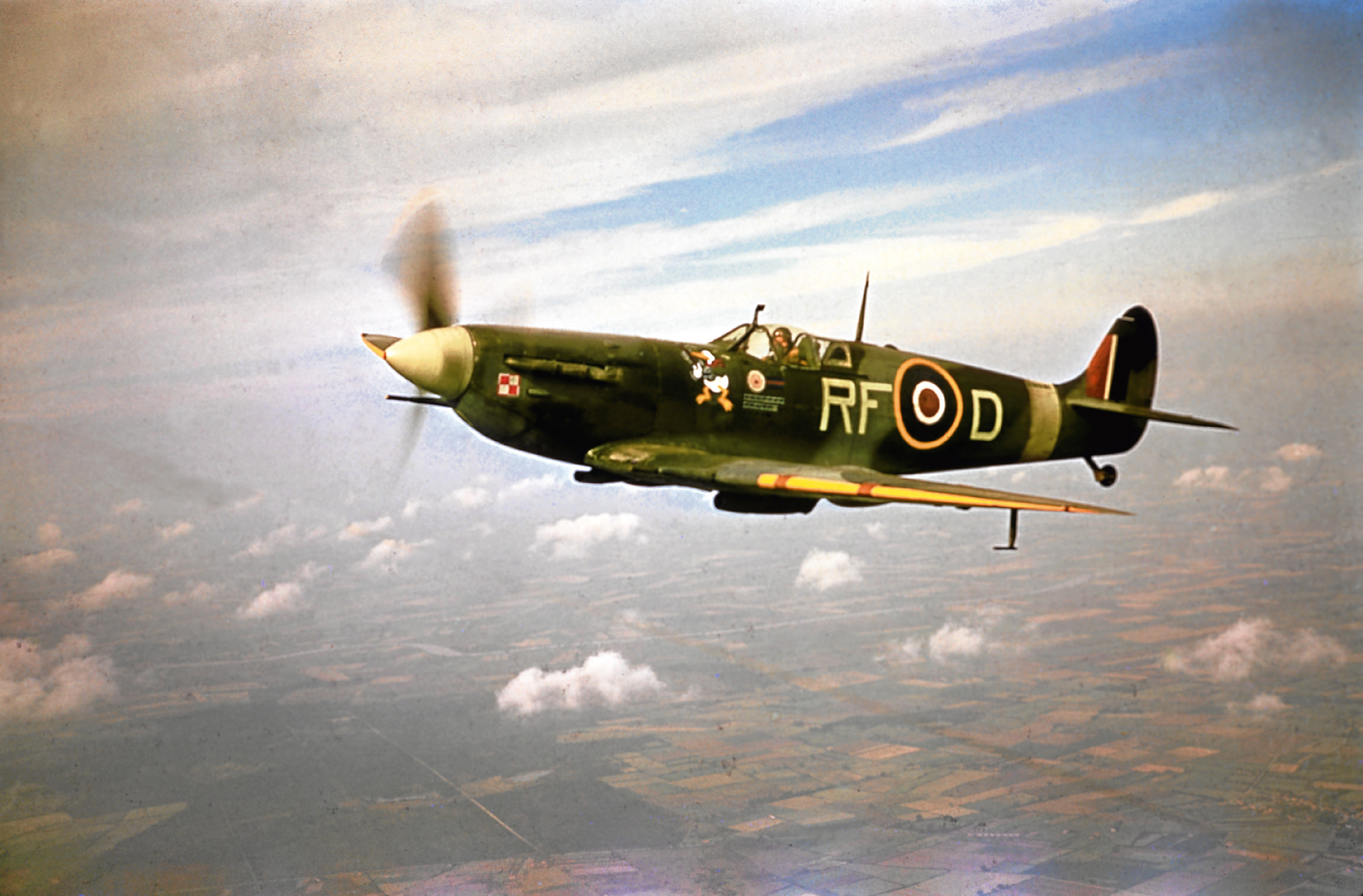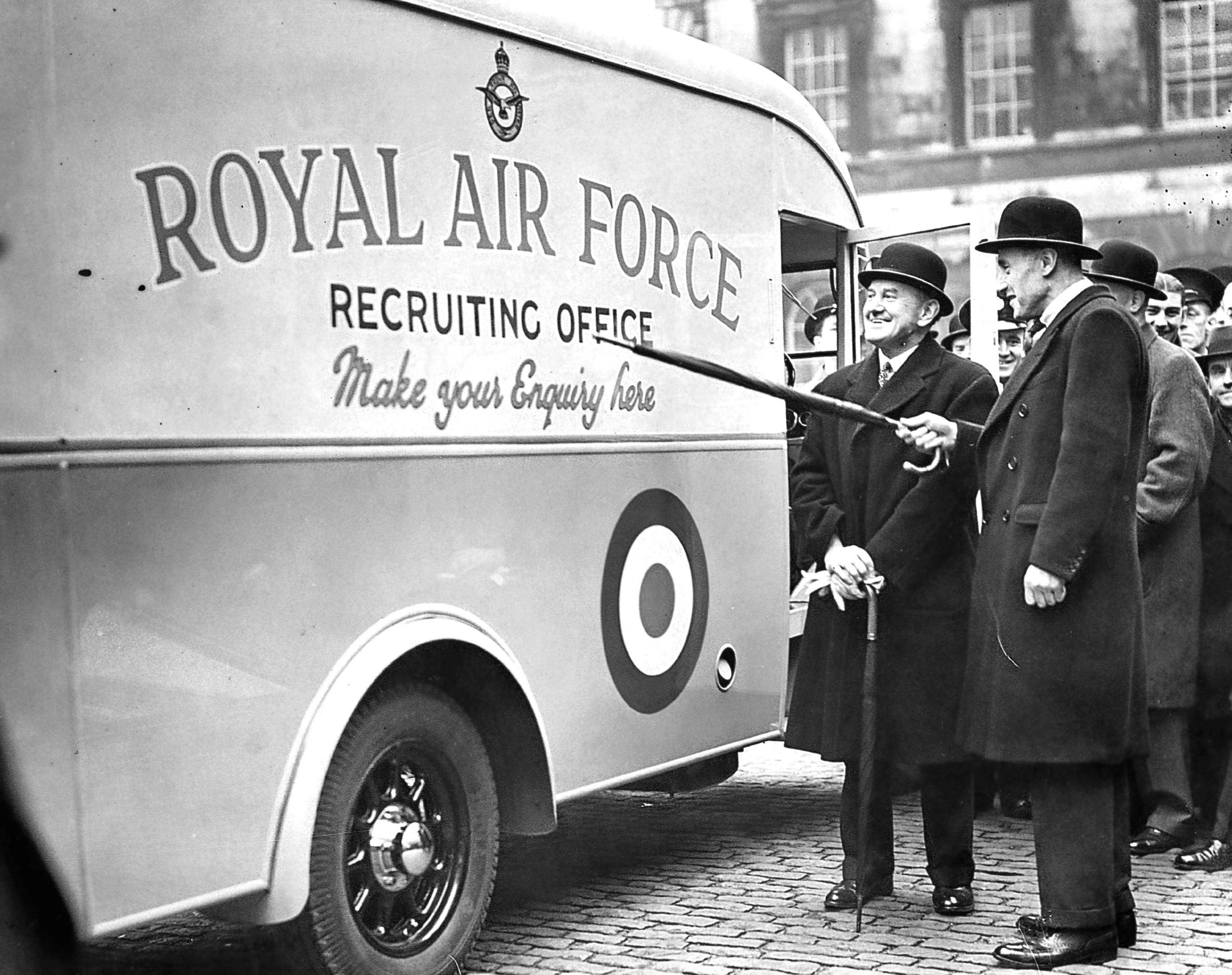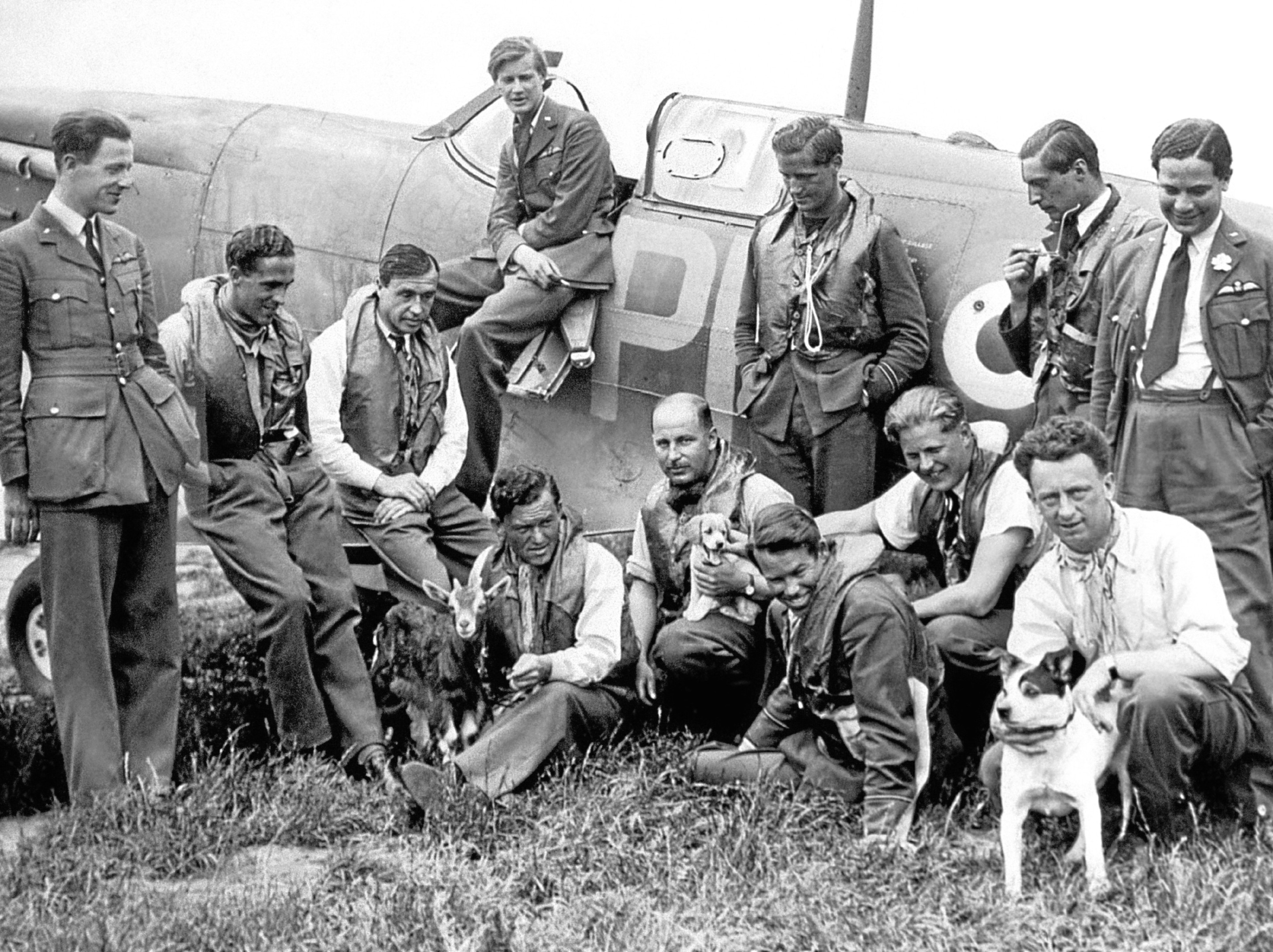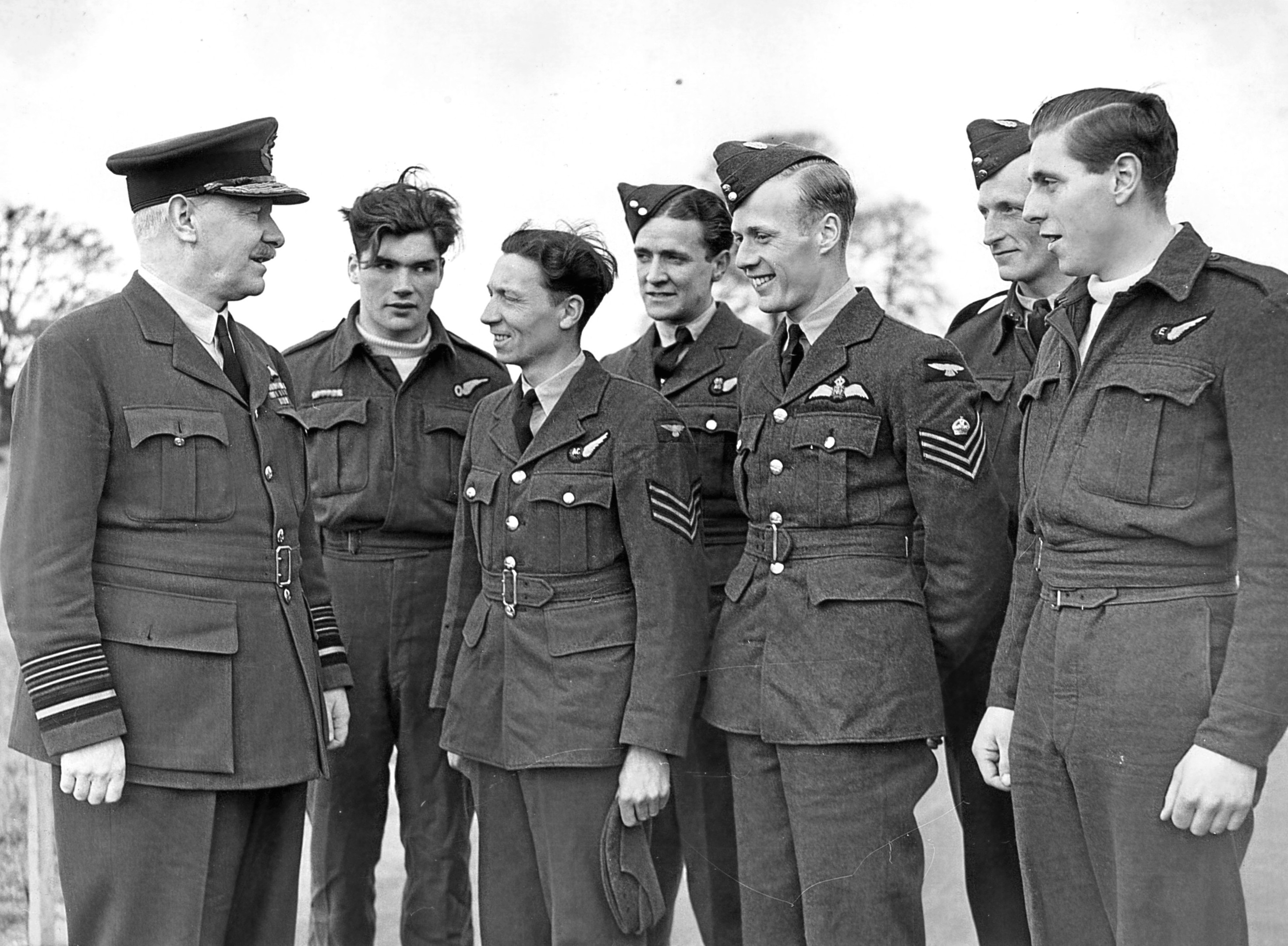
SO much for April Fool’s Day.
The world’s oldest independent air force, the Royal Air Force, was formed on April 1, 1918, as the First World War was entering its final, decisive stages.
By the end of the conflict, it was the largest air arm in existence, boasting 4,000 combat aircraft and 114,000 personnel, in some 150 squadrons.
The British weren’t the first to make use of aircraft for warfare, but during the war, the Royal Flying Corps, the air arm of the British Army, which had just 2,073 men in 1914, and the Admiralty’s equivalent, the Royal Naval Air Service, developed from flying primitive machines that were as dangerous to their pilots as to the enemy into sophisticated units.
They flew effective warplanes such as the Sopwith Camel fighter — as flown by Biggles, the air ace hero created by Captain W. E. Johns, himself a former RFC pilot who was shot down over the Western Front — and the Handley-Page 0/400 heavy bomber.
In 1917, General Jan Smuts, the future PM of South Africa, recommended the formation of a new air service to be on a par with the Army and Royal Navy, due to its potential for “devastation of enemy lands and the destruction of industrial and populous centres on a vast scale”.
It would also get rid of the inter-service rivalry that had dogged the RFC and RNAS, both of which insisted on developing their own aircraft.
By amalgamating the two, the RAF was formed. The new service’s first HQ was in the former Hotel Cecil on the Strand.
From here, they coordinated the RAF’s response to the German spring offensive, a last desperate effort to win the war before their economy collapsed.
They contributed hugely to slowing the German advance and ensuring the Allies’ retreat didn’t turn into a rout, with bombing and strafing sorties.
On April 12, they dropped more bombs and flew more missions than on any other day of the war.
But the cost was high, with 400 aircrew killed and 1,000 aircraft lost in this period alone, out of a total of just under 10,000 killed during the conflict.
At its worst, when newly-trained pilots were being sent up against German aces in superior machines, the average life expectancy of a British pilot over the Western Front was just 18 hours.
After the Armistice, the RAF’s ranks were swiftly cut back.
Its main responsibility was maintaining control of Iraq by “air policing” — basically bombing rebel villages after their inhabitants had been warned to flee in order to bring tribes to heel, a tactic used across the Empire.
The RAF established a naval branch in 1924, the Fleet Air Arm, but control was handed over to the Admiralty in 1939, just before the outbreak of the Second World War.
The inter-war period saw the RAF dwindle and fall behind the likes of Germany in developing new aircraft. Several squadrons were still equipped with obsolete biplanes when war broke out again.
Thankfully, though, as the 1930s drew on, many began to see the danger posed by the fascist regimes that had taken power, and emphasis was put on developing more modern types of aircraft.
This included the iconic Supermarine Spitfire. Powered by the Rolls-Royce Merlin engine, it was a superbly agile fighter, at least the equal of anything else in the air at that time, and it would be developed throughout the war, becoming faster and more heavily-armed.
But as well as machines, the RAF needed pilots, navigators, air engineers, wireless operators, bomb-aimers and gunners to man them. Under the British Commonwealth Air Training Plan drawn up in the months after war broke out, thousands of aircrew were trained in Canada, Africa and, later, America.
This wasn’t the only way in which the Commonwealth contributed hugely to the RAF. The Royal Canadian Air Force had 30 squadrons in Bomber Command, a quarter of its strength, while the Royal Australian Air Force also flew with this force and played a major role in combatting the Japanese in the Pacific.
People flooded into the light-blue ranks from across the Empire and Europe, as trained aircrew fled the advancing Third Reich. In the summer of 1940, during the famous Battle of Britain, men from no fewer than 14 countries — including 145 Poles and 88 Czechoslovaks — fought in the skies above southern England.
And they were needed.
The numerically superior Luftwaffe attempted to gain control of the air in order to allow Operation Sealion, Hitler’s planned invasion of Britain, to proceed.
It was desperate stuff. The Spitfires and far more numerous Hawker Hurricanes of Fighter Command, flown by legends such as Douglas Bader and Sailor Malan, battled to stop the fleets of Messerschmitts, Heinkels, Junkers and Dorniers.
But the RAF had one key advantage.
If their men were shot down, they could, if unhurt, rejoin the fray. The Luftwaffe’s aircrew were either captured or killed.
Operating at the extent of their range made the Germans vulnerable, and they made the fatal mistake of switching from obliterating the RAF’s fighter airfields to bombing cities, and failed to eradicate the radar network that allowed the RAF fighter controllers to coordinate their defence.
It was a monumental effort and victory by the RAF, and Prime Minister Winston Churchill paid tribute when he said: “Never in the field of human conflict was so much owed by so many to so few.”
Once the threat of invasion had diminished — and eradicated when the US joined the war following the Japanese surprise attack on Pearl Harbor — it was time to take the fight to the Axis powers.
Fighter Command sent its Spitfires and Hurricanes, soon supplemented by “tank-busting” Typhoons and Tempests, on sweeps across occupied France, seeking targets of opportunity or trying to entice the Luftwaffe into dogfights. It was dangerous work that took a terrible toll on pilots.
But the RAF’s largest effort of the war came from the adoption in the 30s of strategic bombing, and the associated construction of long-range heavy bombers.
Under the leadership of Air Chief Marshal “Bomber” Harris, German industrial targets and population centres were attacked.
He mounted “1,000 bomber raids” by scraping together planes and crew from training squadrons as morale-boosting exercises.
At first, the effects were minimal, with few bombs dropped within five miles of the targets. But from 1942, new technology such as H2S and Oboe, which increased accuracy, and new aircraft like the Avro Lancaster meant that by 1945, few German cities hadn’t had huge areas flattened.
The cost was enormous.
With more than 8,000 bombers lost and 55,500 aircrew killed — a death rate of 44% — it’s little wonder my grandfather, a Wing Commander throughout the war, used to say to me: “Any more of that behaviour and you’ll be posted to heavy bombers.”
There is an argument that with whole cities such as Hamburg and Cologne devastated by area bombing, and the RAF paying a high price, Harris would have been better building more de Havilland Mosquitos which could hit pinpoint targets with greater accuracy, while their two-man crew meant fewer aircrew were at risk.
His strategic campaign was wound down as 1944 went on. His bombers were sent against tactical targets such as gun emplacements and railheads as D-Day approached, and to V-1 rocket sites after the landings.
There had also been pinpoint attacks, such as the 1943 Dambusters raid, which used special bouncing bombs to breach dams and flood factories in the Rhur valley, and Operation Jericho which saw Mosquitos breach the walls of Amiens prison to free hundreds of resistance fighters.
Speaking of the resistance, some of the most daring sorties were flown by black-painted Lysanders, liaison aircraft that took off and landed in incredibly short distances. At the dead of night, they dropped SOE agents and freedom fighters into fields lit by just three torches and moonlight.
Less exciting but equally vital work was done by Coastal Command, who mounted tedious long-range patrols out over the Atlantic to tackle the U-boats threatening Britain’s convoy lifeline, and by the transport squadrons.
Their finest hours came in the airborne landings before and on D-Day, when Dakotas towed gliders across the Channel and dropped paratroopers to take bridges and blow up guns, and when the paras were dropped on Arnhem in the ill-fated Operation Market Garden meant to seize a bridge over the Rhine to shorten the war, later depicted in the film A Bridge Too Far.
In 1945, with Germany all but defeated, the RAF readied Tiger Force, a very long-range bomber unit meant to strike at the Japanese home islands. The atomic bombs were dropped before they were needed.
As a result, the RAF’s final actions of the war were humanitarian, dropping food to European civilians in Operation Manna and flying POWs home in Operation Exodus.

Enjoy the convenience of having The Sunday Post delivered as a digital ePaper straight to your smartphone, tablet or computer.
Subscribe for only £5.49 a month and enjoy all the benefits of the printed paper as a digital replica.
Subscribe

